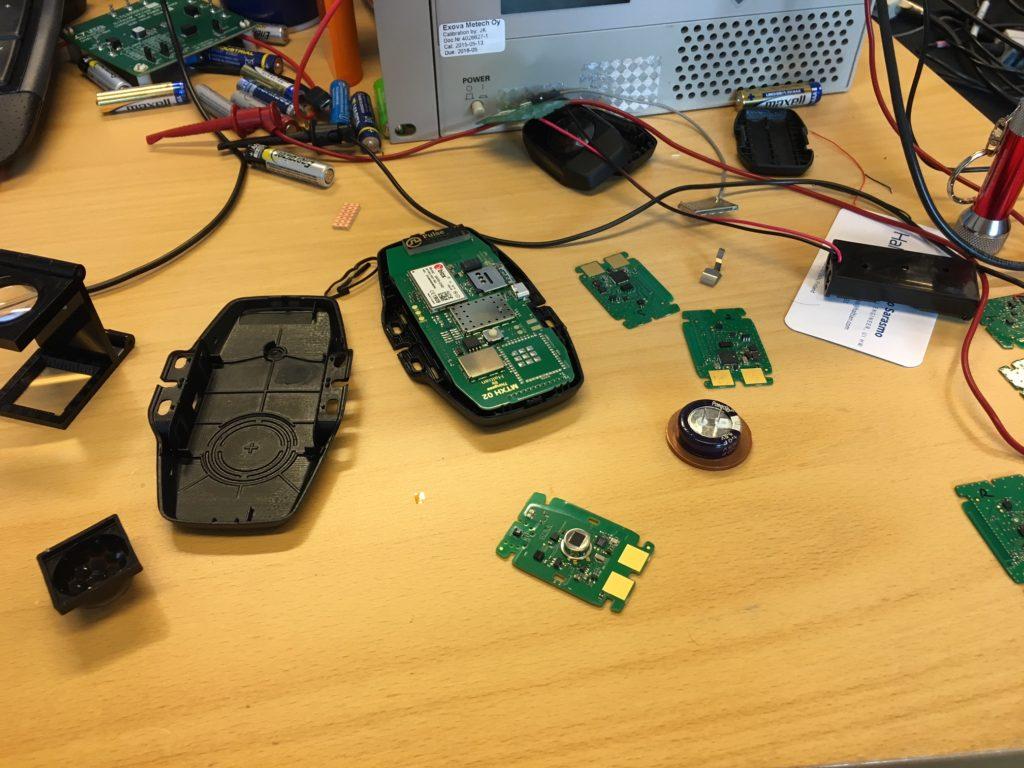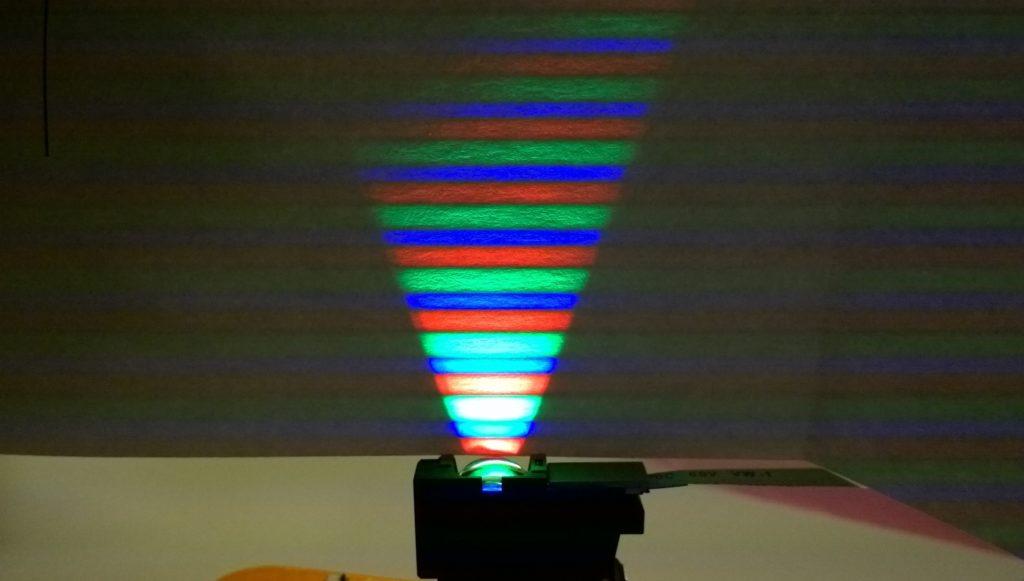Intuitive user experience is the core of hardware engineering
Grab a gadget that you can hold with one hand, and close your eyes. How certain are you that you can operate it – know where the buttons are, know what they do, or know which way you’re pointing the thing? For Marko Sarasmo, Haltian’s Principal Engineer on hardware user interfaces, it’s questions like these that make his day.

He doesn’t only decide where the buttons, if there are any, should go or what they should do, he thinks about the user experience on a larger scale. For instance, he starts talking about whether today’s ultra-high-resolution screens and televisions are actually necessary at all. “When you think about it, the human eye can only see so much detail. The Japanese manufacturers are already starting to move towards 8K, and with 4K you’d have to sit really close to the screen to tell the pixels apart.” He then counters himself talking about audio and unhearable frequencies, which are said to still have an effect – maybe this is the case in visual detail as well? This is clearly someone whose mind focuses on solutions and necessities.

Haltian technology inventor
It’s said at Haltian that he’s the inventor of the company, constantly writing ideas down. “I love it when we do something new, especially if it’s something that has never been made before, ever, by anyone.” The man actually thrives on walking on new ground. He has a sketchbook for ideas, turn-arounds and solutions that pop in his head, just so that when something is needed he might already have an answer. This results not only in an abundance of stored sketchbooks, but also the occasional patent.
This could be because being in a technological transition phase can easily be irritating. He mentions prediction as an example: “I bought a navigator recently, one with voice control and feedback. I could be driving to the store, and the thing asks me if I’m going home.” Of course, as the software evolves, the gadgets we use will learn about us, know what ticks us off and stop asking stupid questions, but we’re not there yet.
Combining beautiful design with engineering
Comparing a pair of remote controls, one for a computer, the other for a video projector, another thing is apparent. The device has to be easy to use and still durable. Also, objects are allowed to be beautiful – they don’t have to look like they’re made by engineers. But this doesn’t mean that the pragmatism doesn’t come first. The video projector’s remote is a dull grey slab, with a button for every action, made of plastic and light to the hand. The other remote is a sleek, metallic thing with only three buttons in it. There’s no contest at all.
Of course, nothing is that simple and straightforward – clunky, ugly things may actually be a delight to use. But more often it’s about saving money, doing a shoddy job and playing safe with usability by adding stuff, which usually combines a wrong solution. Luckily, Sarasmo is a man with loads of experience: “During the years, I’ve learned to get rid of the overkill aspect – the extra that isn’t really useful but adds to the costs.”
Home is where technology is
He gives high praise to the company he works in, although his sketchbook of ideas seems to be crying for product development he rarely receives. He recently had his name in two patents, and those are by no means his first. But all in all, he seems a happy guy. “The working environment is full of outstanding talent – it’s great to be on the same wavelength when we start tossing ideas around and testing things.”
Although he does gardening, music and films, Sarasmo is not someone who shies away from technology when he leaves work. “I don’t take work to home with me, but I’ve got projects of my own.” His hobbies tend to steer towards satisfying his natural curiosity: he has had sensors in his greenhouse (“I built it from old houses’ windows), and he likes to purchase consumer technology for testing and improving them. It doesn’t have to be tech for the next generations, though. “One previous project was making sure the family internet connection works without glitches. Some people just put the box closer to the user, but that wasn’t quite enough for me”, he smiles.
Then again, next generations just might appreciate a wi-fi setup that works perfectly.



